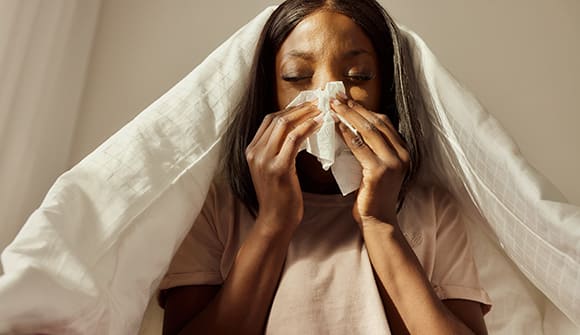Food poisoning or something else?
Not all types come on suddently though symptoms can be similar.
Article Date:

A man collapsed on the way to the bathroom and had to be hospitalized. A woman went to urgent care following weeks of sickness. Several others were initially misdiagnosed.
Local news reported this month on a Cyclospora outbreak that affected dozens. Last week, the FDA reported that outbreaks in Florida and 10 other states may have been caused by fresh basil imported from Mexico by Siga Logistics de RL de CV. The diagnoses came recently, but symptoms began appearing more than a month ago.
Is it hard to know if you have food poisoning? Why did it take patients weeks to identify the source of their upset stomachs and diarrhea?
The type of pathogen was likely the reason, said Peter Jansen, MD, a family doctor at Baptist Primary Care on Fleming Island.
“With Cyclospora, it sometimes takes a week or more for the symptoms to appear,” he said. “You’re thinking—what did I do yesterday? You don't think back to a week earlier when you actually ate the food.”
There are 31 bacteria, parasites and viruses that can cause food poisoning, according to the U.S. Centers for Disease Control. Depending on which one is responsible, food poisoning can hit almost immediately, or after several weeks.
Norovirus, Salmonella and toxin-producing E. coli infections cause the most sicknesses. Cyclospora is pretty rare.
“It’s is a relatively new pathogen that began appearing in the 1990s,” Dr. Jansen said. “But, it’s been growing.”
Infection from food poisoning can range from mild to debilitating, depending on how much of the germ you swallowed and how healthy your immune system is. Victims suffer cramps, fever, vomiting, nausea, and diarrhea.
Those symptoms are shared by other illnesses—like stomach flu.
So when do you suspect food poisoning? Doctors will look at whether a whole group of people came down with the same symptoms at the same time, Dr. Jansen said.
Meats and produce are common sources for most types of food poisoning. To avoid it, we cook meat thoroughly and wash fruits and vegetables. Cyclospora—found most often on imported produce—is harder to protect against.
“You can wash the food and do what you usually do, but washing doesn’t always remove it,” Dr. Jansen said.
Cyclospora can also be tricky to diagnose. Patients suspected of food poisoning are not normally screened for that parasite in stool cultures. A specific test must be used. That could explain why some cases were initially misdiagnosed, Dr. Jansen said.
How do you know if food poisoning is life threatening, or just a mild annoyance? Most people recover on their own a day or two, Dr. Jansen said. But if it hasn’t gone away after that, the next step is a doctor’s visit and antibiotics.
If you have intractable nausea and vomiting and can’t keep liquids down, bypass your doctor and go straight to the emergency room.
On the other hand, if you have localized abdominal pain, it could be the sign of a different medical emergency,
“That could be appendicitis or a gallbladder issue,” Dr. Jansen said.
If you’re experiencing chronic food poisoning symptoms, contact your Baptist Health primary care physician. For severe symptoms, call 911 or go the closest emergency room to you.
Source: Food Poisoning Symptoms, Centers for Disease Control



